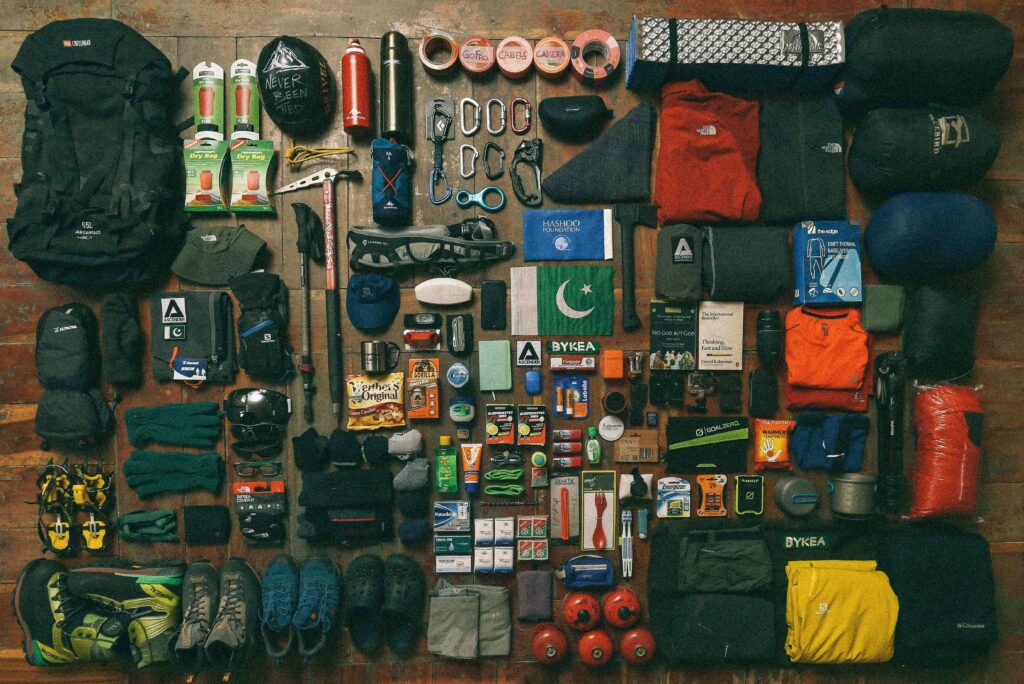Tough, Trusty Backpack
Your backpack is your home base on the trail. It carries everything you’ll rely on food, shelter, gear and if it fails, your trip could too. For most backpacking missions, 40 60 liters is the goldilocks zone. It’s enough space to cover multi day essentials without tempting you to overpack. Bigger packs often mean heavier loads and sore backs.
You want something that fits right and won’t torture your shoulders after hour three. Prioritize ergonomic support adjustable straps, padded hip belts, and a well ventilated back panel all matter. Bonus points if it has a simple internal frame for balance and load transfer. And don’t skip waterproofing. Whether it’s a built in rain cover or waterproof materials, you’ll thank yourself when the sky opens up.
Finally, go with a front loading design. Top loaders work, but digging through your bag every time you need socks gets old fast. A front loader gives you suitcase style access, making it way easier to stay organized and sane.
Quality Hiking Boots
Blisters. Rolled ankles. Wet feet. If you’ve ever hit the trail in the wrong boots, you already know: your entire trip hangs on what’s happening below the knees.
First, lock in the fit. Not too tight, not too roomy. You want just enough space to wiggle your toes but not enough for your foot to slide. Pair your boots with proper hiking socks (ditch the cotton).
Next, think ankle support. Going off trail? Rocky terrain? A mid or high cut boot will save your ankles from doing all the stability work. For casual or flat paths, trail runners might cut it but know your terrain.
Finally, grip. Match your tread to where you’re going. Muddy, slick trails need deeper lugs. Dry, rocky zones need something that sticks without grinding down fast.
Durability matters, but comfort comes first. And if you’re unsure where to start, here’s a guide worth reading: How to Choose the Right Hiking Boots for Your Terrain.
Ultralight Tent or Shelter
Your shelter isn’t just about comfort it’s survival gear. When space and weight are tight, your tent needs to pull its weight without adding much of it. Look for tents in the 2 3 lbs range, compact when packed, and tested to handle wind and rain. Don’t cheap out unless you like waking up soggy or wrestling with poles in the dark.
Now, hammock tents vs. traditional floor tents. Hammocks are great if you’re heading into tree rich terrain. They keep you off wet ground, pack down easily, and pitch fast. But they don’t work well above tree line or in exposed alpine zones. Floor tents, on the other hand, are more versatile across terrain types. You get full protection from bugs, cold air, and ground moisture but with a few more ounces and setup steps. If you’re staying light but still want peace of mind, a single wall, freestanding tent might be your sweet spot.
Sleep System That’s Actually Comfortable

Sleep is survival. When temps drop and your body’s wiped from hiking 15 miles, a subpar sleep setup isn’t just annoying it’s dangerous.
Start with a sleeping bag rated for the coldest nights you expect. Not the average. The coldest. If you’re heading somewhere that dips below freezing, get a bag that goes at least 10°F lower than that number. Down bags are warmer and lighter, but synthetic stays warm when wet pick your fighter based on where you’re going.
Next, the unsung hero: the sleeping pad. This isn’t optional. It’s as much about insulation as it is about comfort. A good pad keeps your body heat from seeping into the ground and helps prevent that morning boulder back feeling. Prioritize high R value if you’re in colder zones.
And here’s the space saver: compression sacks. Stuff your bag and pad into one of these torture devices and you’ll open up serious real estate in your pack. Just make sure your gear is dry before stuffing trapped moisture can ruin a bag fast.
Lightweight Cooking Gear
Cooking on the trail doesn’t have to mean bulky equipment or complicated meals. With the right ultralight setup, you can eat well without adding unnecessary weight to your pack.
Essential Cooking Items
Single burner stove: A compact, high efficiency stove is ideal for boiling water and preparing basic meals. Look for one with adjustable flame control and wind resistance.
Aluminum pot: Lightweight and easy to clean, one medium sized pot is usually enough for solo or duo backpacking trips.
Multi functional spork: Save space and weight with a utensil that covers all your eating needs from stirring oatmeal to scooping pasta.
Pro Tip: Prioritize Fuel Efficiency
In colder environments or high altitudes, isobutane canisters offer more reliable performance than propane alone.
Choose gear that pairs well together stoves with built in windshields and fuel regulators are worth the investment.
Plan meals that don’t require long cook times to conserve fuel over multi day treks.
Bonus Item: Collapsible Sink Bag
Cleaning up matters too. A collapsible sink bag adds minimal weight but makes washing dishes and cookware far more convenient, especially when you’re far from running water.
Backcountry meals don’t need to be fancy, but they do need to be simple, functional, and efficient. Master this gear category, and you’ll thank yourself every evening on the trail.
Purification System for Water
Water is non negotiable. If you’re heading into the backcountry in 2026, don’t count on pre packed bottles to see you through. They’re bulky, heavy, and run out fast. You need a system.
The gear has evolved. The LifeStraw is still solid for solo hikers and quick sips, but it won’t cut it for group treks or base camps. UV pens zap bacteria in seconds and are great for clear water, but they need battery backups and don’t always handle murky streams well. Gravity fed systems are the go to for efficiency they pump out liters with minimal effort, especially good for setting up camp.
Still, tools are only half the game. Knowing how to scout clean sources matters more. Running water is safer than still. Go upstream. Avoid water near heavy algae blooms, animal activity, or campsites. If it smells off, don’t trust it filter or not.
Bottom line: Always carry a backup method. Always treat your water. And always know where your next refill is coming from.
First Aid Kit You Actually Check Before You Go
When you’re miles from the nearest help, a well stocked first aid kit isn’t optional it’s essential. Too many backpackers pack one and never touch it again until they’re injured. Avoid that trap.
What to Include
Double check that your kit covers the basics:
Cuts & Scrapes: Sterile gauze, antiseptic wipes, adhesive bandages
Blisters: Moleskin, blister pads, tape
Bites & Stings: Antihistamine, insect sting relief
Hydration: Electrolyte tablets or rehydration salts
Pain Relief: Ibuprofen or acetaminophen
Stay Up to Date
A first aid kit is only useful if its contents are fresh and functional.
Replace any expired medications or ointments
Check for worn out packaging or broken items
Restock your most used items after each trip
Pro Tip: Think Beyond First Aid
Some common repair and survival items also belong in your first aid stash:
Duct tape: Great for blister prevention, emergency repairs, or even splints
Zip ties: Lightweight and endlessly useful for quick fixes
Treat your kit like a living part of your gear list review it before every trip, not once a year.
Navigation Gear (Not Just Your Phone)
Digital maps are convenient until they aren’t. GPS apps can save time and show trails better than any paper map, but they rely on one thing: battery life. And out in the wild, batteries don’t tend to ask before they quit.
That’s why backup navigation should never be optional. A good old fashioned topo map and compass don’t run out of juice, glitch out, or lose signal. Know how to use both before you’re miles from anywhere. It’s not about being a purist it’s about staying found.
For those heading off grid or into the serious backcountry, consider packing a satellite communicator. It adds weight, sure, but it also enables location tracking and emergency contact from places your phone can’t even dream of reaching. In short: don’t let your navigation system be a single point of failure.
Weather Ready Layering Gear
The right layers are your frontline defense against unpredictable weather and poor decisions. Start with a base layer that wicks away sweat. Wet skin and cold air are a dangerous mix. Merino wool or synthetic blends beat cotton every time. Cotton stays damp, chills you out, and invites blisters and chafing.
Next comes your mid layer: insulation. Think lightweight fleece or a down jacket whatever traps heat without weighing you down. On top, throw on a weatherproof shell. Wind. Rain. Sudden snow squalls. None of it matters if you’ve got a solid outer layer that shrugs off the elements.
Don’t forget the small stuff either. Gloves and a beanie aren’t optional they’re essential. Cold fingers fumble knots. An exposed scalp bleeds heat fast. And backup socks? Always. Dry feet are non negotiable. Stay dry, stay warm, keep moving.
Layer smart, and your body will thank you mile after mile.
Headlamp + Backup Light Source
Once the sun dips, you’ll wish you had both hands free. A reliable headlamp is non negotiable don’t even think about nightfall without one. Whether you’re cooking, setting up camp, or navigating a pitch dark trail, hands free lighting keeps things efficient and safe.
Pack extra batteries or bring a power bank if your light is rechargeable. Cold weather drains power faster than you’d expect, and fumbling in the dark isn’t just annoying, it can be dangerous.
Mini lanterns add a layer of comfort small but mighty. Clip one in your tent or hang it from a branch to set up camp without burning through headlamp juice. It’s a little luxury that earns its spot in your kit.
Stay light, stay smart, and pack like every ounce matters because out on the trail, it does.
